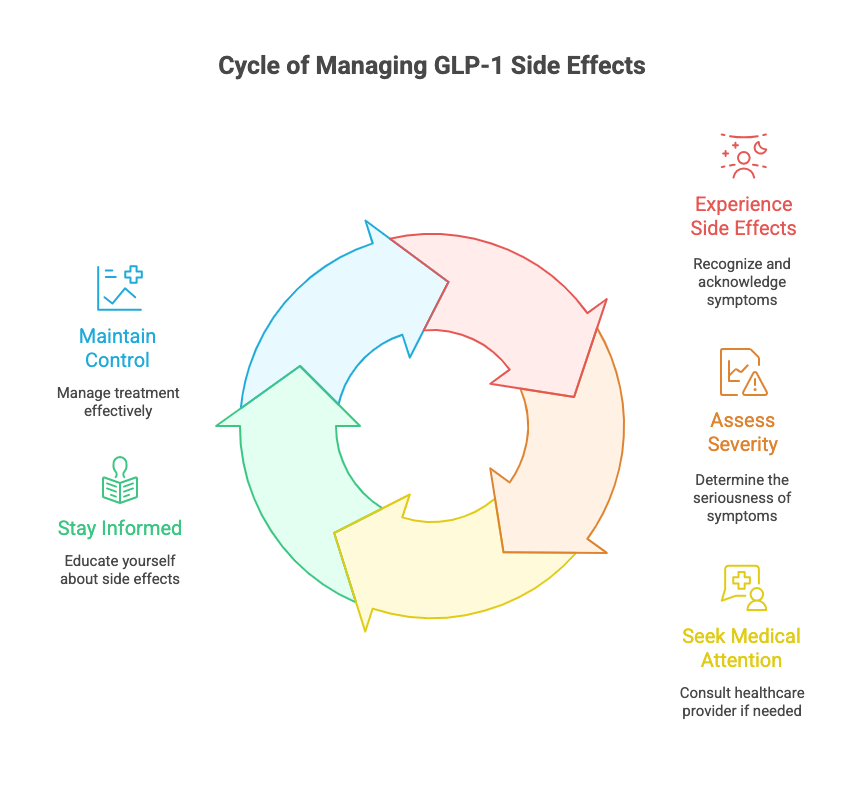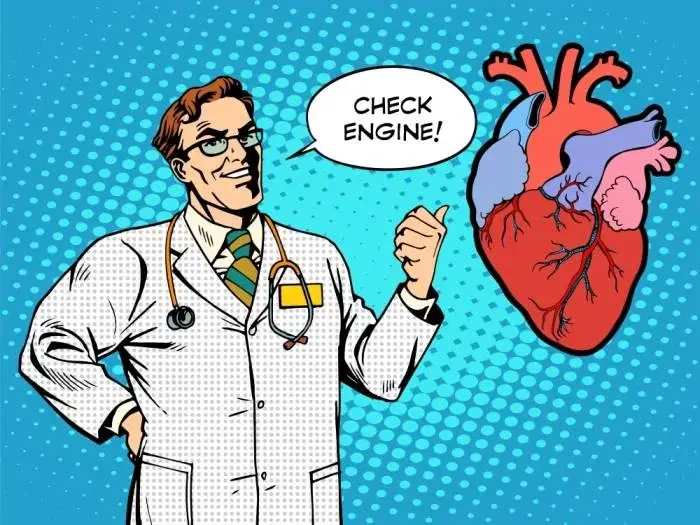Key Highlights
- GLP-1 receptor agonists are effective diabetes medications that can help manage blood sugar and support weight loss, but they bring a range of side effects.
- Common side effects include gastrointestinal issues like nausea, vomiting, diarrhea, constipation, and changes in appetite.
- Certain users may experience cosmetic changes such as facial fat loss (often called “Ozempic face”) or temporary hair loss following significant weight loss.
- Rare yet serious risks include pancreatitis, gallbladder problems, thyroid tumors, and acute kidney injury.
- Injection site reactions like redness or swelling are possible, and monitoring for allergic responses is essential.
- Many GLP-1 side effects improve over time with lifestyle changes and careful medical guidance, but some require prompt medical attention.
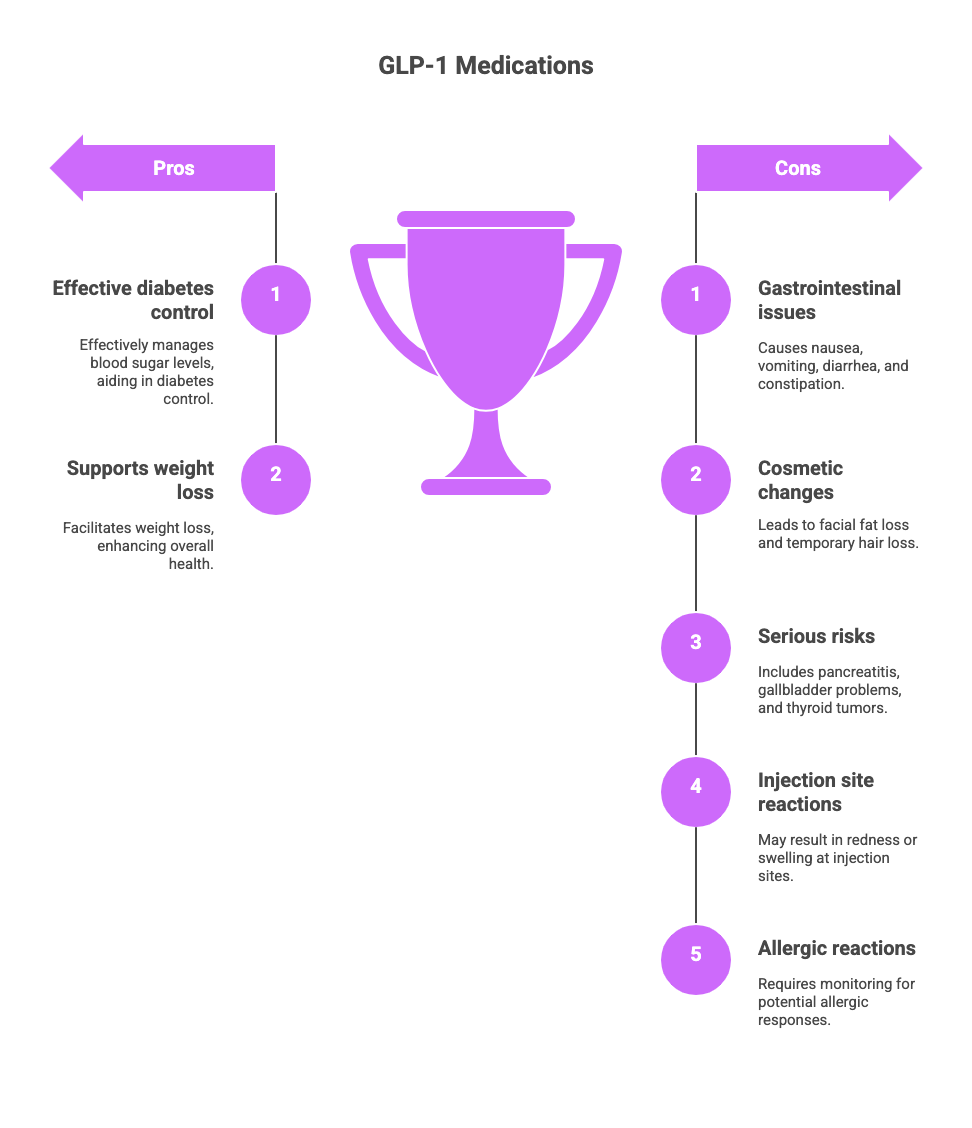
Navigating the Side Effects of GLP-1 Medications: What You Need to Know
GLP-1 medications have revolutionized the way we manage weight loss and diabetes. If you’re taking drugs like Ozempic, Wegovy, Mounjaro, or Trulicity, you might be feeling optimistic about your weight loss and diabetes control. However, it’s important to stay informed about potential side effects to maintain your overall well-being.
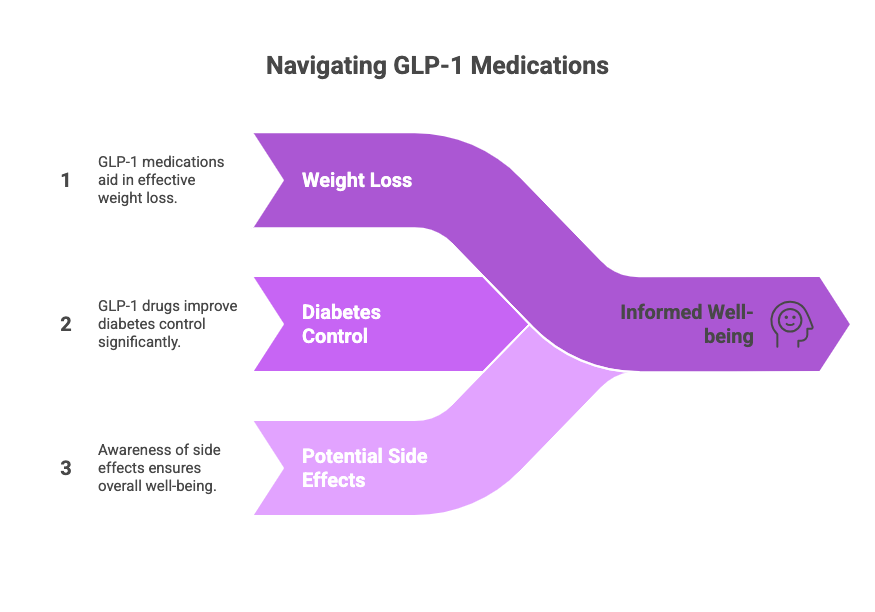
Understanding GLP-1 Medications
GLP-1 receptor agonists can change your life dramatically. They’re prescribed for conditions such as obesity, type 2 diabetes mellitus, or cardiovascular risk management. These medications work by slowing the digestive process, which helps control appetite but may also lead to some uncomfortable side effects.
Common Side Effects
While the benefits are significant, GLP-1 medications can sometimes cause nausea, bloating, and constipation. These side effects arise from the way these drugs manage food passage through your digestive system. It’s helpful to think of it like a traffic light, pacing your food traffic, thereby affecting your appetite.
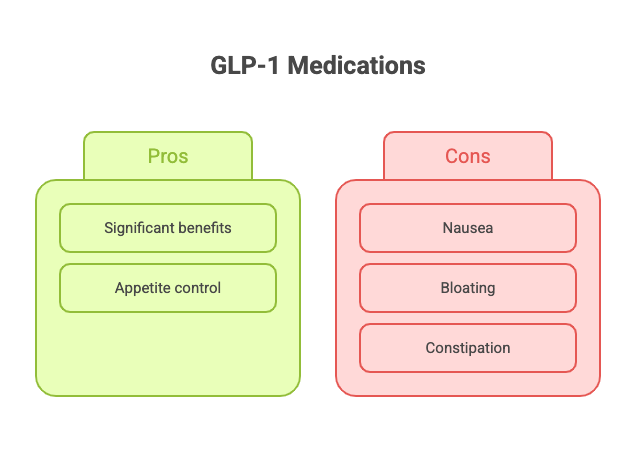
Managing Side Effects
Here are some strategies to manage the side effects associated with GLP-1 medications:
- Start Slow: Begin with the lowest possible dose to see how your body reacts.
- Eat Smaller Meals: This approach can help reduce the chances of nausea and bloating.
- Stay Hydrated: Keeping hydrated is key, especially when experiencing gastrointestinal side effects.
- Know When to Stop: If you experience severe symptoms such as persistent abdominal pain or signs of pancreatitis, seek medical advice immediately.
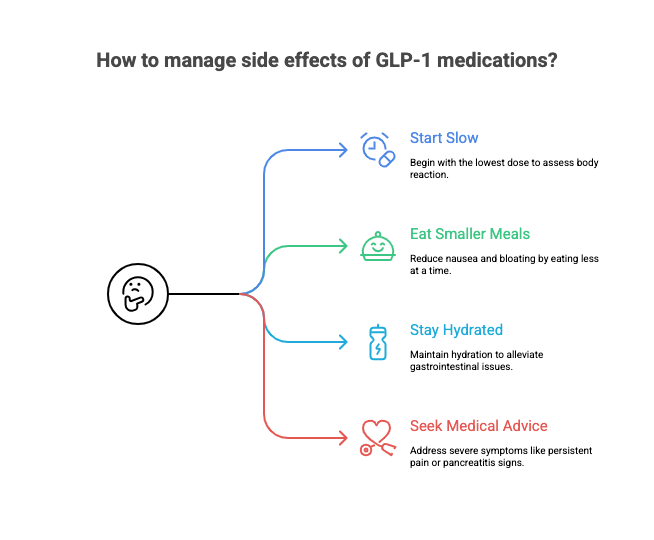
When to Seek Medical Attention
While it’s tempting to power through, persistent vomiting can lead to dehydration and may warrant a trip to the emergency room. It’s crucial to listen to your body and take these symptoms seriously.
By understanding and acknowledging the side effects, you can maintain control over your treatment and continue to benefit from the positive effects of the medication. Stay informed, stay safe, and consult with your healthcare provider regularly to ensure the best possible outcome for your health.
Thank you for taking the time to read and educate yourself about the potential side effects of GLP-1 medications. Your health is a journey, and staying informed is an empowering step in the right direction.
